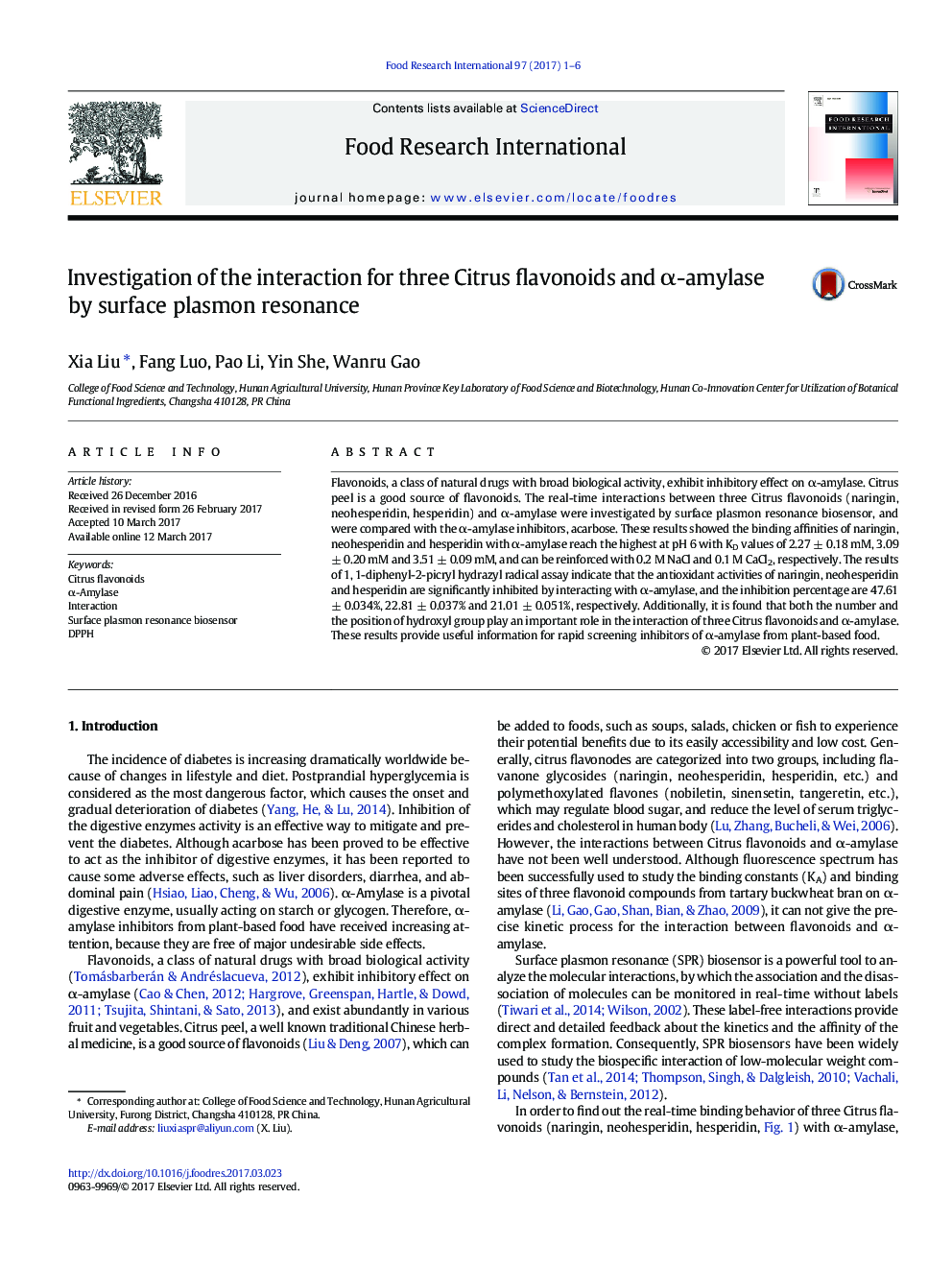| کد مقاله | کد نشریه | سال انتشار | مقاله انگلیسی | نسخه تمام متن |
|---|---|---|---|---|
| 5768201 | 1628453 | 2017 | 6 صفحه PDF | دانلود رایگان |

- The real-time interactions of hesperidin, neohesperidin, naringin with α-amylase were investigated using SPR biosensor.
- Affinities of three flavonoids to α-amylase are the highest at pH 6, can be reinforced with 0.2 M NaCl or 0.1 M CaCl2.
- Binding of three flavonoids to α-amylase induced the decrease of their antioxidant activities.
- Binding of three flavonoids to α-amylase depends strongly on both the number and position of hydroxyl group.
Flavonoids, a class of natural drugs with broad biological activity, exhibit inhibitory effect on α-amylase. Citrus peel is a good source of flavonoids. The real-time interactions between three Citrus flavonoids (naringin, neohesperidin, hesperidin) and α-amylase were investigated by surface plasmon resonance biosensor, and were compared with the α-amylase inhibitors, acarbose. These results showed the binding affinities of naringin, neohesperidin and hesperidin with α-amylase reach the highest at pH 6 with KD values of 2.27 ± 0.18 mM, 3.09 ± 0.20 mM and 3.51 ± 0.09 mM, and can be reinforced with 0.2 M NaCl and 0.1 M CaCl2, respectively. The results of 1, 1-diphenyl-2-picryl hydrazyl radical assay indicate that the antioxidant activities of naringin, neohesperidin and hesperidin are significantly inhibited by interacting with α-amylase, and the inhibition percentage are 47.61 ± 0.034%, 22.81 ± 0.037% and 21.01 ± 0.051%, respectively. Additionally, it is found that both the number and the position of hydroxyl group play an important role in the interaction of three Citrus flavonoids and α-amylase. These results provide useful information for rapid screening inhibitors of α-amylase from plant-based food.
169
Journal: Food Research International - Volume 97, July 2017, Pages 1-6